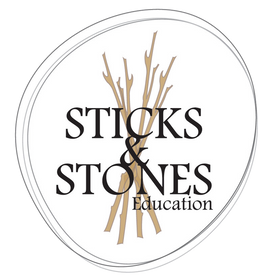
Reflection Questions for Quality Area 5: Relationships with Children
Reflection Questions for Quality Area 5: Relationships with Children
Reflecting is not only about what happened and why. It also guides our decision making. It forces us to analyse different aspects of experiences we offer to make judgements in what should be repeated, extended or changed.
The following questions are to be used as a guide for reflecting on each of the standards within Quality Area 5. Use the information from these questions to recognize good practice or to change and improve what is not working well. It can also be used as part of Self-Assessment or Quality Improvement Plan.
STANDARD 5.1: Relationships with Children
Element 5.1.1 - Positive educator to child interactions: Responsive and meaningful interactions build trusting relationships which engage and support each child to feel secure, confident and included.
Element - 5.1.2 Dignity and rights of the child: The dignity and rights of every child are maintained.
Questions to guide reflection on practice for Standard 5.1
• How do we build close, secure relationships with children of all ages, abilities, genders and backgrounds?
• How do we ensure children feel that they belong and are included in the service, can participate in all learning experiences and that their contributions are appreciated and recognised?
• How do we learn about individual children’s non-verbal cues and communication strategies, and the specific communication requirements of each child? How do we cater for and help each child to reach their potential?
• How do we promote children’s social and emotional competence?
• How do we identify and overcome potential barriers to inclusion at the service so that each child’s participation is supported?
• How do we respectfully engage in children’s play? What roles do we play?
• How do we deliberately, purposefully and thoughtfully interact with children to support their learning?
• What strategies and techniques do we use to extend and build on children’s comments and conversations?
• How do we respond to the distress some children experience when they have to adapt to unfamiliar routines, new people and new places?
• How do we respond sensitively and appropriately to all children’s efforts to communicate?
• How do we respond in a fair and consistent way to our own children and to the children who attend the service?
• How do we consider the rights of every child when planning and implementing the program?
• How do we encourage all children to understand their rights and the rights of others?
• How do our service’s policies and procedures support each child’s dignity and rights?
• How do we identify and minimise the impact of our own biases on our practices and relationships with children and families? How are children’s rights considered in these reflections?
• How do we support children to form and maintain positive relationships with others?
• How is a culture of respect, equity and fairness encouraged in the service? How is this communicated to educators, children and families?
• How do we model positive and respectful relationships with children?
• How do we support children’s development and understanding of respectful relationships?
STANDARD 5.2 - RELATIONSHIPS BETWEEN CHILDREN: EACH CHILD IS SUPPORTED TO BUILD AND MAINTAIN SENSITIVE AND
RESPONSIVE RELATIONSHIPS.
Element 5.2.1 - Collaborative learning: Children are supported to collaborate, learn from and help each other
Element 5.2.2 - Self-regulation: Each child is supported to regulate their own behaviour, respond appropriately to the behaviour of others and communicate effectively to resolve conflicts.
Questions to guide reflection on practice for Standard 5.2
How do we promote a sense of community within the service?
• How do we foster positive relationships between members of the educator’s family and the children being educated and cared for?
• How do we plan the program and routines to ensure adequate time for children to engage in uninterrupted play experiences and projects of their own choosing, with a variety of peers and adults?
• How do educators plan and create opportunities for children to collaborate with others to progress their learning?
• How do we support individual children to engage with others in ways that are appropriate for each child’s development?
• How do we ensure that our policies regarding interactions with children and behaviour guidance reflect current information about child development and current recognised approaches in guiding young children’s behaviour?
• How do we reflect on our own experiences, beliefs and attitudes that may influence the way in which we guide children’s behaviour?
• How do we support children to recognise their own emotions and those of others?
• What opportunities do children have to make decisions about rules, expectations and consequences in relation to their own and others’ behaviour?
• How do we manage situations where we experience challenges in guiding the behaviour of a child or a group of children?
• How do we work with families, other professionals and support agencies to ensure that behaviour guidance strategies maintain the rights of each child to be included in the environment and program at all times? How are different expectations managed?
• How do we meet older children’s needs for independence and greater freedom?
• How do we ensure a consistent approach to guiding children’s behaviour between schools and the service as well as meeting the rights of children in a recreation and leisure program?
• How do we support educators when they are feeling stressed by, or are having difficulty coping with, a child’s behaviour?
-
Reflection Questions for Quality Area 1: Educational Program and Practice
-
Reflection Questions for Quality Area 2: Children's Health and Safety
-
Reflection Questions for Quality Area 3: Physical Environment
-
Reflection Questions for Quality Area 4: Staffing Arrangements
-
Reflection Questions for Quality Area 5: Relationships with Children
- Reflection Questions for Quality Area 6: Collaborative Partnerships with Families & Communities
- Reflection Questions for Quality Area 7: Governance & Leadership
















